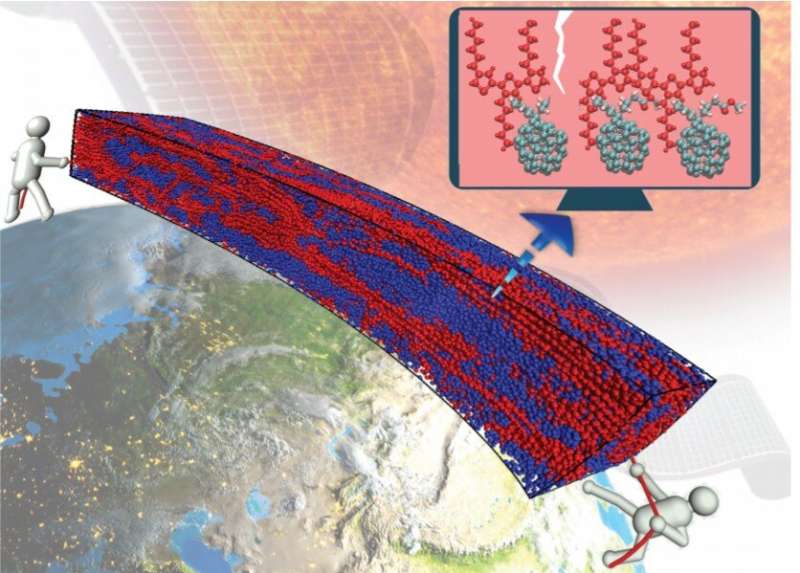Molecular additives enhance mechanical properties of organic solar cell material

Organic solar cells are ideal for use in flexible electronics because of the inherently malleable nature of semiconducting polymers. Recent research on the interplay between processing, thermodynamics and mechanical stability of typical photoactive layers in organic cells is providing a deeper understanding of these high-potential materials.
Ganesh Balasubramanian, P.C. Rossin assistant professor of Mechanical Engineering & Mechanics at Lehigh University, and his graduate student Joydeep Munshi recently set out to understand how stable these materials are when deformed, and whether the promising properties can be realized under harsh loading conditions when the solar cells may be subject to stretching and compression. Through computational experiments using the leadership class computing resources in Frontera, the team demonstrated that adding small molecules to the semiconducting polymer blend enhances the performance and stability of material used in organic solar cells. They predict this is also true for organic solar cell material more generally.
The study is described in an article, "Elasto-morphology of P3HT:PCBM bulk heterojunction organic solar cells" featured on the back cover of Soft Matter. Additional authors include: professors TeYu Chien at the University of Wyoming and Wei Chen, at Northwestern University.
"Based on previous literature, we anticipated that variations in the materials processing parameters would influence the structure as well as the thermal and mechanical properties of these solar cells," says Balasubramanian. "However, the finding that presence of small molecular additives can augment the mechanical properties is new knowledge gained from this work."
The team demonstrated that, in addition to the solar-to-electrical power conversion efficiency, the mechanical stability and flexibility of typical organic solar cells is significantly impacted by the presence of molecular additives.
"This could prove crucial towards the commercialization of organic solar cells," says Balasubramanian.
The results were achieved by performing large scale molecular simulations in the supercomputer Frontera, located at the Texas Advanced Computing Center (TACC) at the University of Texas at Austin), which is the world's fastest academic supercomputer. The predictions consisted of the deformation mechanisms of the polymer blend under straining conditions as well as examining the structure/morphology of the material upon loading. Balasubramanian's team has been among the first to utilize Frontera.
While similar approaches have been considered for interrogating the properties of organic photovoltaic materials, the correlation between the material structure and elastic properties had not been done before, according to Balasubramanian. By adding molecular additives to the polymeric blends, advanced solar power materials and devices can be fabricated that sustain extreme operational stress-strain conditions while delivering superior performance.
He adds: "The research has the potential to provide new directions for scientific practices in this field of materials and energy research."
More information: Joydeep Munshi et al, Elasto-morphology of P3HT:PCBM bulk heterojunction organic solar cells, Soft Matter (2020). DOI: 10.1039/D0SM00849D
Journal information: Soft Matter
Provided by Lehigh University





















